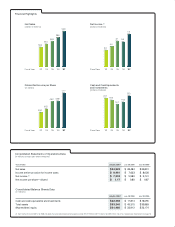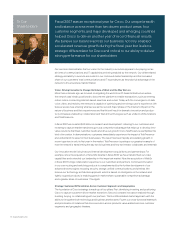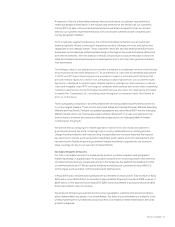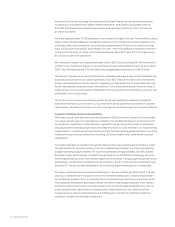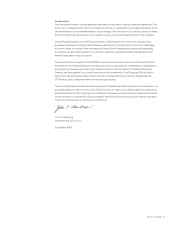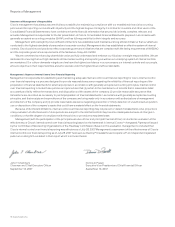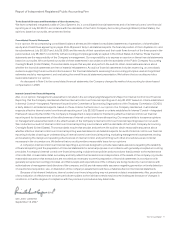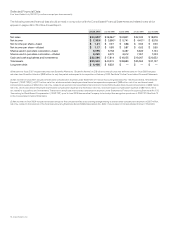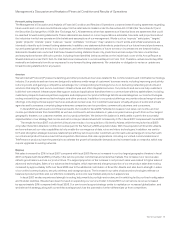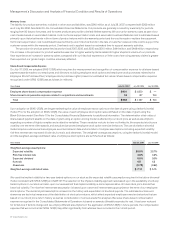Cisco 2007 Annual Report Download - page 9
Download and view the complete annual report
Please find page 9 of the 2007 Cisco annual report below. You can navigate through the pages in the report by either clicking on the pages listed below, or by using the keyword search tool below to find specific information within the annual report.
Fiscal 2007 was an exceptional year for Cisco. Our unique breadth
and balance across more than two dozen product areas, four
customer segments, and major developed and emerging countries
helped Cisco to deliver another year of record nancial results.
We believe our balance across our business not only enabled
accelerated revenue growth during the scal year, but is also a
strategic differentiator for Cisco and critical to our ability to deliver
strong performance for our shareholders.
To Our
Shareholders
Our success demonstrates that our vision for the industry’s evolution appears to be playing out as
all forms of communications and IT capabilities are being enabled by the network. Our differentiated
strategy and ability to execute are evident in our continued market leadership and the increased
share of our customers’ total communications and IT expenditures as they take full advantage of the
network to drive business transformation.
Vision: Driving Innovation to Change the Nature of Work and the Way We Live
More than a decade ago, we focused on migrating the world to an IP-based infrastructure where
the network was initially positioned to become the platform to enable transactions, such as entering
orders online, conducting Internet-based searches, and e-mail. Today, with the convergence of data,
voice, video, and mobility, the network is capable of optimizing and enriching a user’s experience. We
believe we are now entering what we see as the second major phase of the Internet’s impact on the
nature of business and life’s experiences and that this will result in dramatic innovation and produc-
tivity increases enabled by collaboration and Web 2.0 technologies such as unied communications
and TelePresence.
In scal 2007, we invested $4.5 billion in research and development. Listening to our customers and
investing to capture market transitions give us a competitive advantage that helps us to develop inno-
vative solutions that meet customer needs and drive our growth. Cisco TelePresence exemplies this
kind of innovation. In demonstrations, customers immediately experience the impact of TelePresence
and understand its value for their businesses. The result has been rapidly accelerating growth in
recent quarters in only its rst year in the market. TelePresence is perhaps our greatest example of
how the network is transforming the way we do business and how we interact, collaborate, and entertain.
Our innovation model is built around internal development, acquisitions, and partnerships. For
example, since the acquisition of Scientic Atlanta in scal 2006, we have transformed our video
capabilities and extended our leadership in this important market. Now, the acquisition of WebEx
in scal 2007 brings collaboration expertise to our customers and partners. Continued innovation
in our core routing and switching products is complemented by the further development of our
advanced technologies, including security, storage, unied communications, and wireless. We
believe our technology architecture approach, which is based on intelligence in the network and
tightly coupled products, is enabling gains in market share, sustainable competitive advantage,
and a greater share of customers’ IT budgets.
Strategy: Sustained Differentiation Across Customer Segments and Geographies
The foundation of Cisco’s strategy is made up of four pillars. First, identifying, investing, and positioning
Cisco to capture customer-driven market transitions. Second, constant innovation enabled through
building, buying, or collaborating with our partners. Third, a differentiated market approach with the
ability to tie together both technology and business architectures. Fourth, our cross-functional teamwork
and prioritization of initiatives that drive execution across products, value-added services, customer
segments, and geographic theaters.
12 Cisco Systems, Inc.


